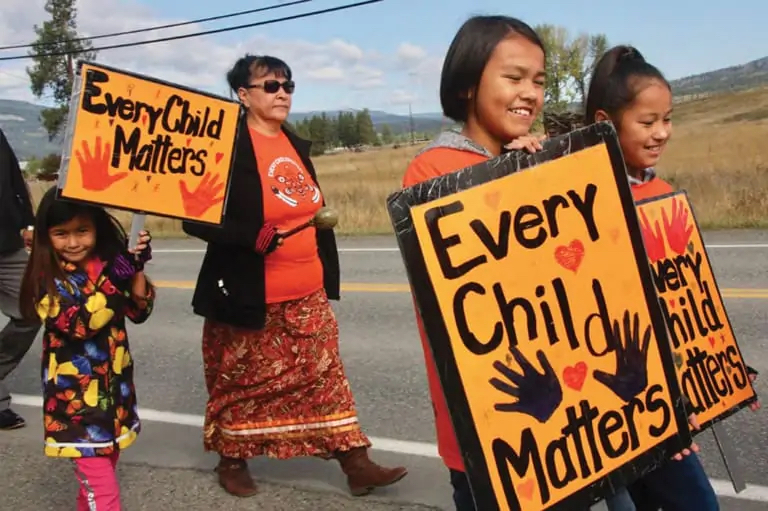September Special Message “Setting the Tone for the School Year”
Posted on September 1, 2022
September is an exciting month for all involved with back-to-school preparations: Beginning a new academic year, First Nations Education Administrators, Directors of Education, teachers, principals, parents, and students are enthusiastic about returning to schools and learning organizations.
One key way to set a positive tone for the school year is to breathe life into the practice and promotion of the First Nations traditional value of Respect. This requires ongoing activities throughout the year. This is accomplished by:
- acknowledging the teachings from Traditional Elders of inclusiveness and acceptance which helps mitigate the serious. unacceptable behavior of bullying.
- implementing Respect as a school-based priority in the presentation of culture which nurtures new perspectives to issues.
- sharing teachings and stories of Respect throughout the school year in weekly assemblies, at special events, and in classrooms where different subjects.
- celebrating the new “Truth and Reconciliation” federal holiday on September 30 to reinforce the importance of Respect as an inherent First Nation value.
That day was chosen since Orange Shirt Day was unofficially recognized on September 30, 2013, in an “Every Child Matters” movement. The slogan “Every Child Matters” originated from the experience of Phyllis Webstad in 1973, when her orange clothing was taken away from her at a British Columbia residential school. The clothing was given to her by her grandmother, and despite how much she cried and begged for her clothing back, the nuns at the residential school reacted in a way that demonstrated that her feelings did not matter. Thus, “Every Child Matters” stems from feelings of exclusion and being the recipient of harsh treatment.

Bullying occurs when repeated, intentional mean actions are inflicted upon another causing emotional and at times physical pain. Educating students about the history of “Every Child Matters” and the “National Day for Truth and Reconciliation” will portray anti-bullying and kindness strategies as culturally appropriate. Setting the tone using Respect and First Nations history throughout the school year can become the baseline for mediating solutions should bullying occur.
According to Susan Fitzell, Educational Consultant, some strategies for building a respectful caring school and classroom environment include the following.
- During sharing discussions, teach students the vocabulary for their emotions as they arise so they have words for how they feel.
- Acknowledge and praise acts of kindness that are witnessed.
- Use authoritative discipline which involves students’ involvement in predetermining meaningful rules and consequences; remain consistent in your discipline approach.
- Require restitution rather than an apology. Assist the student who inflicted harm to figure out a way to make up for what happened.
- Validate students’ feelings.
- Address name-calling, as ignoring it reinforces that it is OK.
- Take time to build relationships with each student.
It is important to remember that positive, respectful leadership requires a lot of energy; therefore, be mindful to practice and model self-respect by taking time to take care of your physical, mental, and spiritual self.
FNEAA wishes all First Nation Education Administrators a respectful and productive 2022-2023 academic year.
References:
“Top 5 Tips for Teachers: Back to School Edition.” www.esparklearning.com
“A Dozen Ways to Build a Caring Classroom Community.” www.susanfitzell.com

Orange Shirt Day began in Williams Lake in 2013 and has since spread to schools across BC and Canada. (Orangeshirtday.org) Orange Shirt Day (September 30th) is a day when we honor the Indigenous children who were sent away to residential schools in Canada and learn more about the history of those schools.
The “orange shirt” in Orange Shirt Day refers to the new shirt that Phyllis Webstad was given to her by her grandmother for her first day of school at St. Joseph’s Mission residential school in British Columbia. When Phyllis got to school, they took away her clothes, including her new shirt. It was never returned. To Phyllis, the color orange has always reminded her of her experiences at residential school and, as she has said, “how my feelings didn’t matter, how no one cared and I felt like I was worth nothing. All of us little children were crying and no one cared.”
The message that Phyllis wants to pass along on Orange Shirt Day — and every day — is that every child matters. Orange Shirt Day was started by Phyllis to educate people about residential schools and fight racism and bullying.
There are many ways you can get involved!